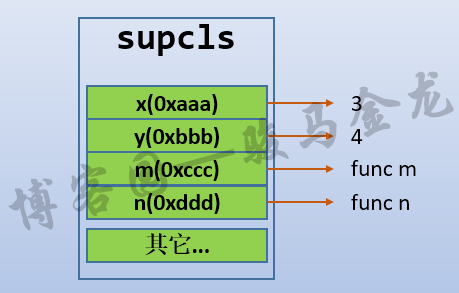在Python 3中实现类型检查器的简单方法
示例函数
为了开发类型检查器,我们需要一个简单的函数对其进行实验。欧几里得算法就是一个完美的例子:
def gcd(a, b):
'''Return the greatest common divisor of a and b.'''
a = abs(a)
b = abs(b)
if a < b:
a, b = b, a
while b != 0:
a, b = b, a % b
return a
在上面的示例中,参数 a 和 b 以及返回值应该是 int 类型的。预期的类型将会以函数注解的形式来表达,函数注解是 Python 3 的一个新特性。接下来,类型检查机制将会以一个装饰器的形式实现,注解版本的第一行代码是:
def gcd(a: int, b: int) -> int:
使用“gcd.__annotations__”可以获得一个包含注解的字典:
>>> gcd.__annotations__
{'return': <class 'int'>, 'b': <class 'int'>, 'a': <class 'int'>}
>>> gcd.__annotations__['a']
<class 'int'>
需要注意的是,返回值的注解存储在键“return”下。这是有可能的,因为“return”是一个关键字,所以不能用作一个有效的参数名。
检查返回值类型
返回值注解存储在字典“__annotations__”中的“return”键下。我们将使用这个值来检查返回值(假设注解存在)。我们将参数传递给原始函数,如果存在注解,我们将通过注解中的值来验证其类型:
def typecheck(f):
def wrapper(*args, **kwargs):
result = f(*args, **kwargs)
return_type = f.__annotations__.get('return', None)
if return_type and not isinstance(result, return_type):
raise RuntimeError("{} should return {}".format(f.__name__, return_type.__name__))
return result
return wrapper
我们可以用“a”替换函数gcd的返回值来测试上面的代码:
Traceback (most recent call last):
File "typechecker.py", line 9, in <module>
gcd(1, 2)
File "typechecker.py", line 5, in wrapper
raise RuntimeError("{} should return {}".format(f.__name__, return_type.__name__))
RuntimeError: gcd should return int
由上面的结果可知,确实检查了返回值的类型。
检查参数类型
函数的参数存在于关联代码对象的“co_varnames”属性中,在我们的例子中是“gcd.__code__.co_varnames”。元组包含了所有局部变量的名称,并且该元组以参数开始,参数数量存储在“co_nlocals”中。我们需要遍历包括索引在内的所有变量,并从参数“args”中获取参数值,最后对其进行类型检查。
得到了下面的代码:
def typecheck(f):
def wrapper(*args, **kwargs):
for i, arg in enumerate(args[:f.__code__.co_nlocals]):
name = f.__code__.co_varnames[i]
expected_type = f.__annotations__.get(name, None)
if expected_type and not isinstance(arg, expected_type):
raise RuntimeError("{} should be of type {}; {} specified".format(name, expected_type.__name__, type(arg).__name__))
result = f(*args, **kwargs)
return_type = f.__annotations__.get('return', None)
if return_type and not isinstance(result, return_type):
raise RuntimeError("{} should return {}".format(f.__name__, return_type.__name__))
return result
return wrapper
在上面的循环中,i是数组args中参数的以0起始的索引,arg是包含其值的字符串。可以利用“f.__code__.co_varnames[i]”读取到参数的名称。类型检查代码与返回值类型检查完全一样(包括错误消息的异常)。
为了对关键字参数进行类型检查,我们需要遍历参数kwargs。此时的类型检查几乎与第一个循环中相同:
for name, arg in kwargs.items():
expected_type = f.__annotations__.get(name, None)
if expected_type and not isinstance(arg, expected_type):
raise RuntimeError("{} should be of type {}; {} specified".format(name, expected_type.__name__, type(arg).__name__))
得到的装饰器代码如下:
def typecheck(f):
def wrapper(*args, **kwargs):
for i, arg in enumerate(args[:f.__code__.co_nlocals]):
name = f.__code__.co_varnames[i]
expected_type = f.__annotations__.get(name, None)
if expected_type and not isinstance(arg, expected_type):
raise RuntimeError("{} should be of type {}; {} specified".format(name, expected_type.__name__, type(arg).__name__))
for name, arg in kwargs.items():
expected_type = f.__annotations__.get(name, None)
if expected_type and not isinstance(arg, expected_type):
raise RuntimeError("{} should be of type {}; {} specified".format(name, expected_type.__name__, type(arg).__name__))
result = f(*args, **kwargs)
return_type = f.__annotations__.get('return', None)
if return_type and not isinstance(result, return_type):
raise RuntimeError("{} should return {}".format(f.__name__, return_type.__name__))
return result
return wrapper
将类型检查代码写成一个函数将会使代码更加清晰。为了简化代码,我们修改错误信息,而当返回值是无效的类型时,将会使用到这些错误信息。我们也可以利用 functools 模块中的 wraps 方法,将包装函数的一些属性复制到 wrapper 中(这使得 wrapper 看起来更像原来的函数):
def typecheck(f):
def do_typecheck(name, arg):
expected_type = f.__annotations__.get(name, None)
if expected_type and not isinstance(arg, expected_type):
raise RuntimeError("{} should be of type {} instead of {}".format(name, expected_type.__name__, type(arg).__name__))
@functools.wraps(f)
def wrapper(*args, **kwargs):
for i, arg in enumerate(args[:f.__code__.co_nlocals]):
do_typecheck(f.__code__.co_varnames[i], arg)
for name, arg in kwargs.items():
do_typecheck(name, arg)
result = f(*args, **kwargs)
do_typecheck('return', result)
return result
return wrapper
结论
注解是 Python 3 中的一个新元素,本文例子中的使用方法很普通,你也可以想象很多特定领域的应用。虽然上面的实现代码并不能满足实际产品要求,但它的目的本来就是用作概念验证。可以对其进行以下改善:
- 处理额外的参数( args 中意想不到的项目)
- 默认值类型检查
- 支持多个类型
- 支持模板类型(例如,int 型列表)
